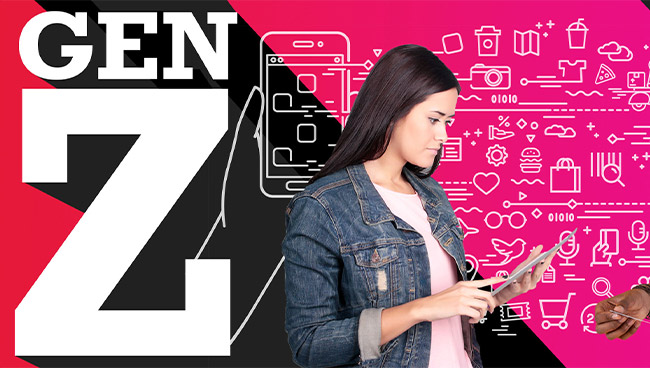Retailers count more reward program memberships than any other industry – 1.6 billion in the U.S. Keeping those members active is another matter, however, and the challenge may be even greater among young Gen Z members. Here’s why, and four insights into how to click with Gen Z.
There are 78 million of them. And among the oldest who are between 16 and 22, few think your loyalty program is special. So how are retailers going to appeal to Gen Z?
Considering that retailers count more loyalty memberships than any industry – 1.6 billion out of a total of 3.8 billion – these are tough odds. Even with 1.6 billion memberships1, enrollment in programs doesn’t guarantee customer loyalty in 2019.
More than half of all U.S. reward program members are in fact inactive, meaning they sign up, possibly for a special offer, and then lose interest. Those figures could escalate among young Gen Z shoppers, who were born between 1997 and 2012, if retailers don’t pay attention now to the unique preferences of this segment.
The call to action is clear: To resonate with Gen Z, retailers need to make their experiences different, and loyalty programs are one tool in their chest to differentiate.
Based on our How America Shops® Future Shop: A View to 2020 report, here are some tips for appealing to this valuable group.
- Make it memorable. Retail loyalty programs are expanding from plain old point systems, through which members earn point for purchases and then can redeem them for goods, to experiential rewards. Experiential retail trends, popular among young shoppers, include invitations to exclusive events, such as fashion shows, makeover artists, or first access to sale items.
- Be convenient, but also accountable. Loyalty apps, such as Starbucks Rewards and those of other high-frequency food and beverage chains, are highly attractive for their convenience. Members just load money onto the apps and never need their wallets for purchase. However, members who are less diligent about tracking their visits could be dismayed by invisible spending. Receipts, balance summary notifications and reward expiration alerts will help members feel in control.
- Give them function. Gen Z lives on the go and prefers goods and services that accomplish more than one job. Snacks and beverages double as legit meals, for example; workout clothes have as many hidden pockets as a car has cup holders. Similarly, reward programs should multitask – recommending food orders prior to lunch time, or alerting members when products that match their preferences are on sale (with one-click ordering).
- Healthy rewards. Gen Z values low-stress rewards – 64% see stress as the No. 1 obstacle to a healthy life, compared with 52% of the total population, according to our research. Further, 43% of Gen Z shoppers spend more on healthy goods this year than last year. They will connect with loyalty programs that reward them for participating in healthy activities. Walgreens Balance Rewards and Vitamin Shoppe Healthy Rewards are good examples.
Gen Z will transform the landscape of retail, and that extends to rewards programs and the definition of loyalty. At 26% of the population, they are growing up quickly, forming their lifelong shopping habits, and now is the time to take them seriously.
1. The COLLOQUY Loyalty Census


